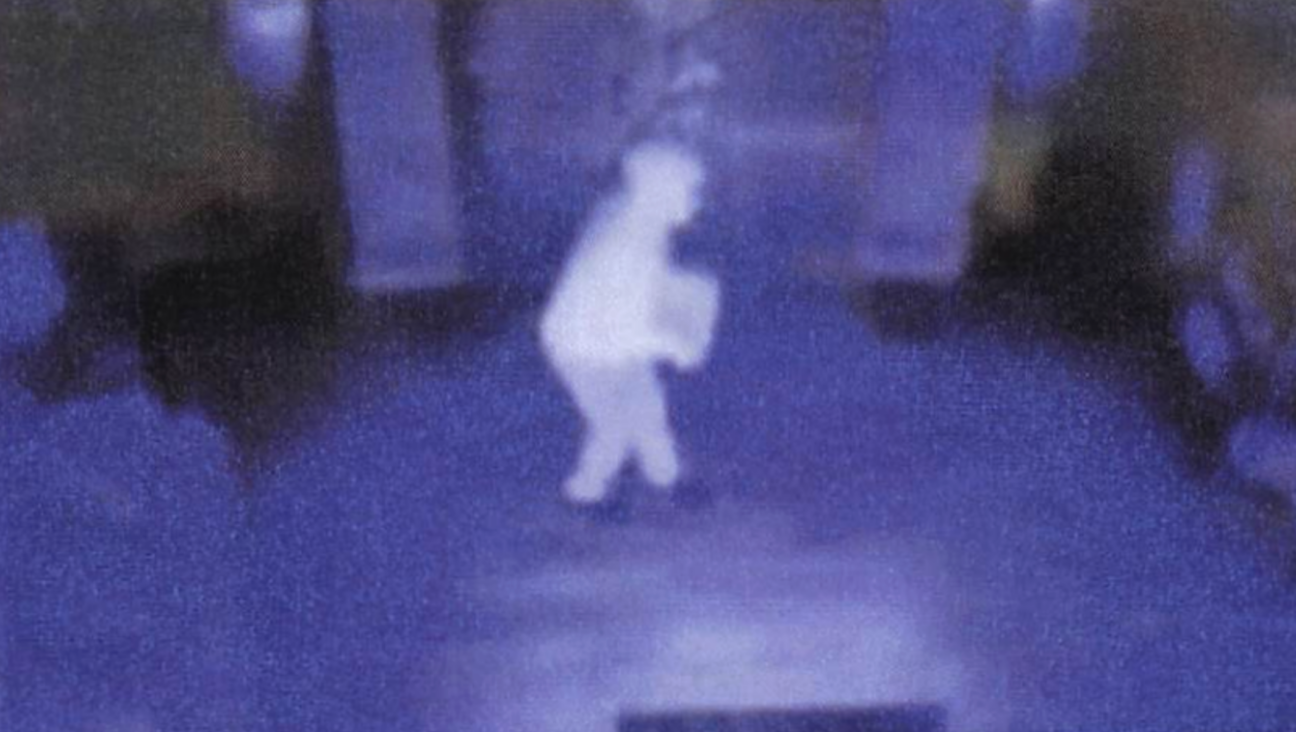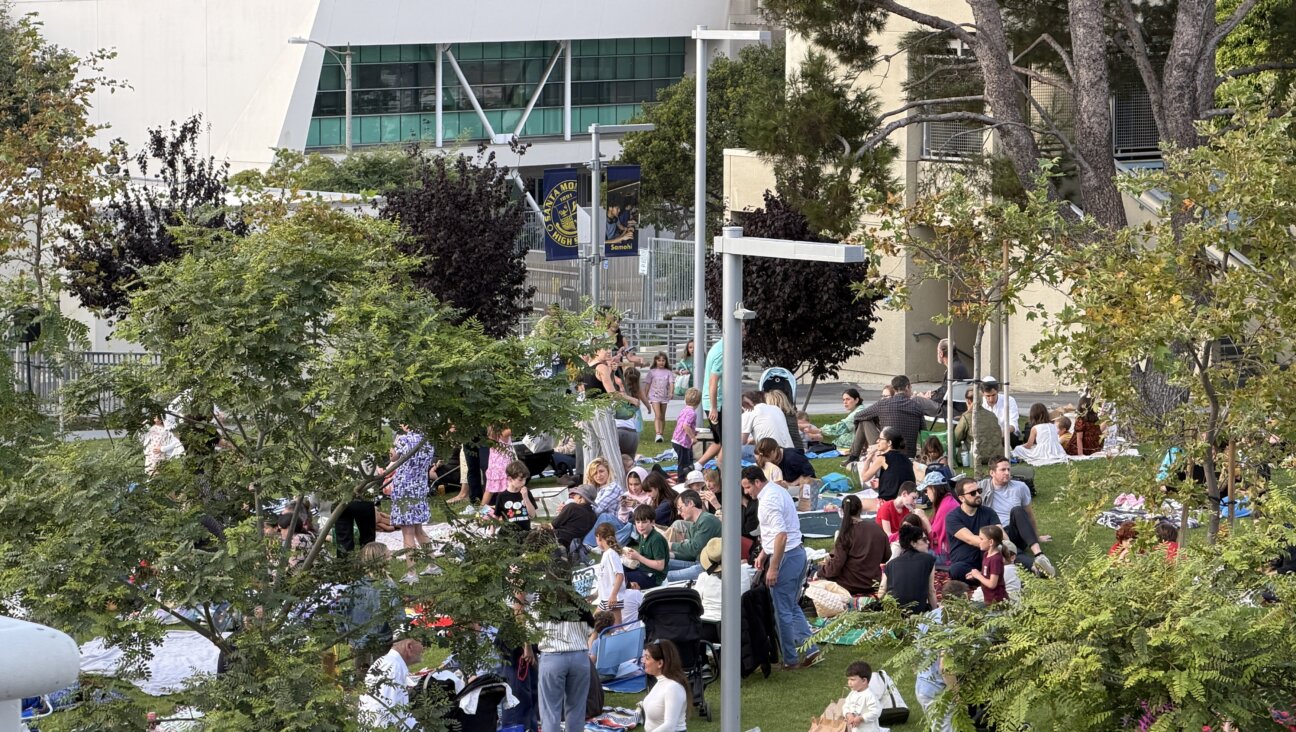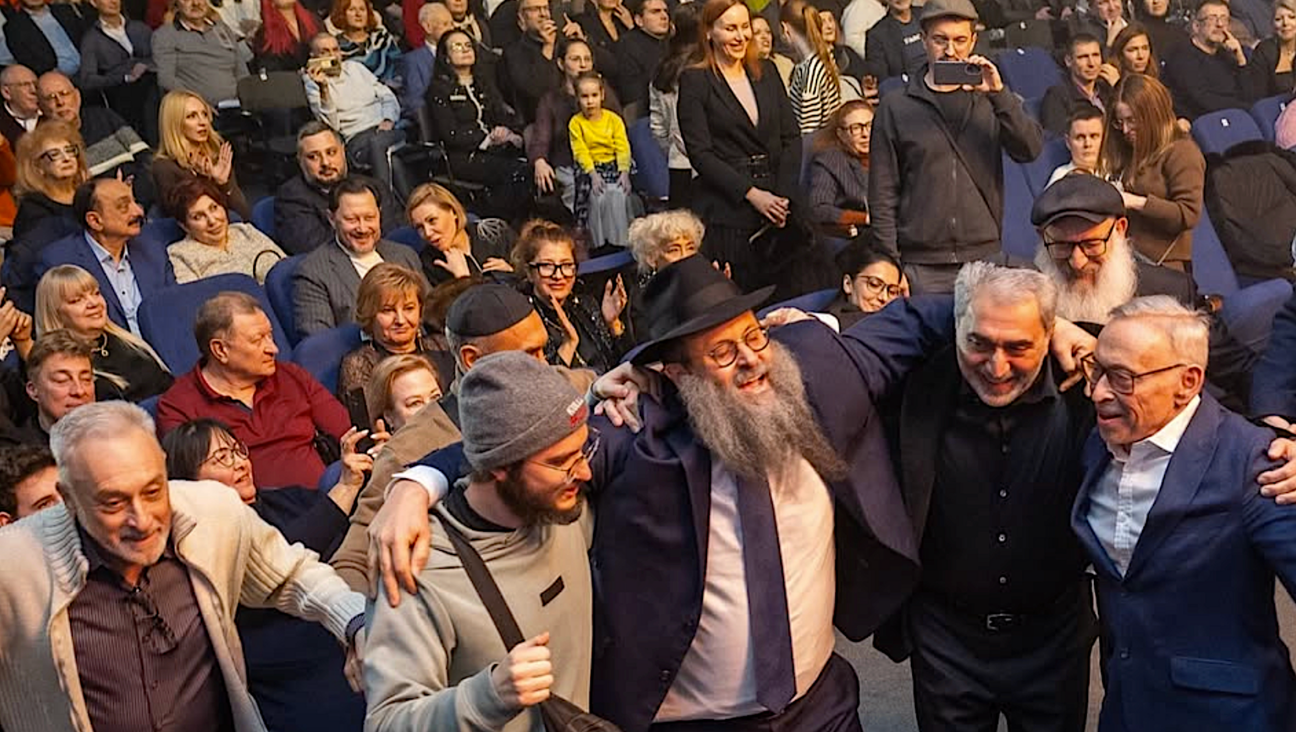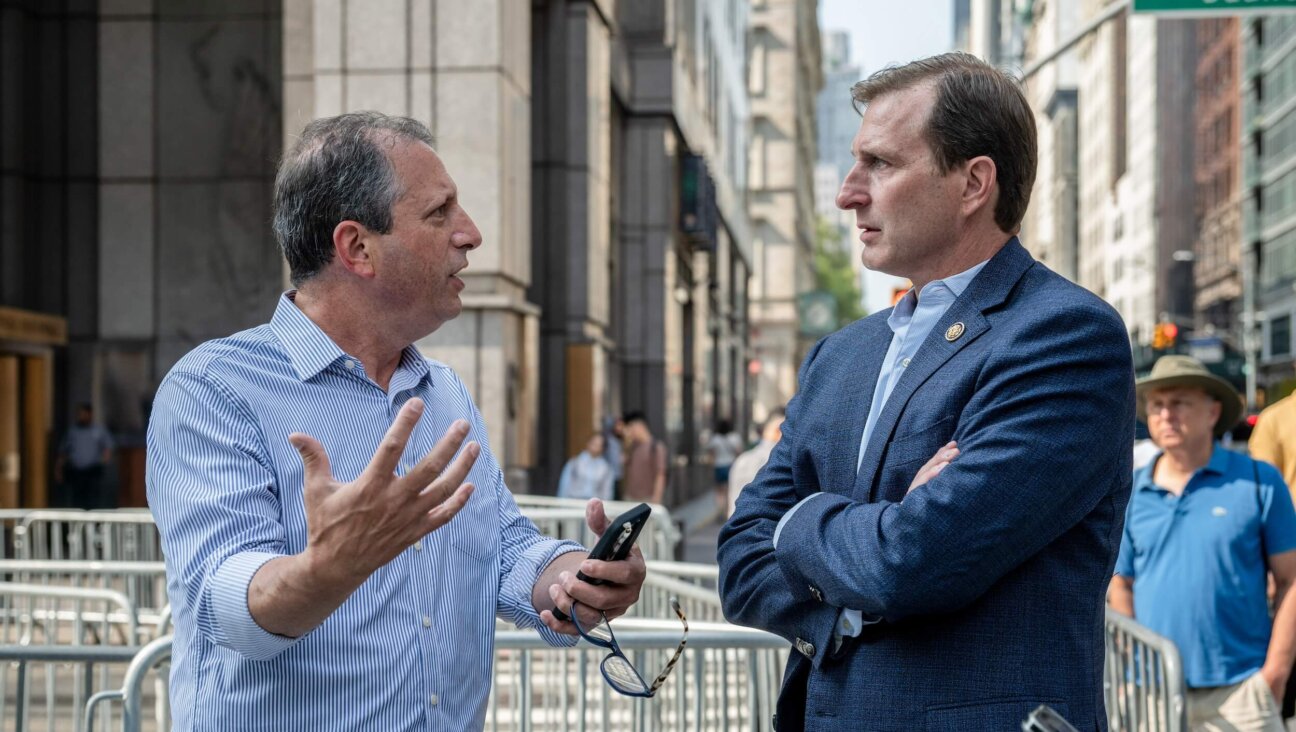She came to New York hoping to escape Israeli politics. Instead, she founded a protest movement
After gaining prominence in New York City by advocating for Israeli democracy — and then fighting for the release of hostages held by Hamas — activist Shany Granot-Lubaton and her husband, Omer Lubaton-Granot, are returning to Israel
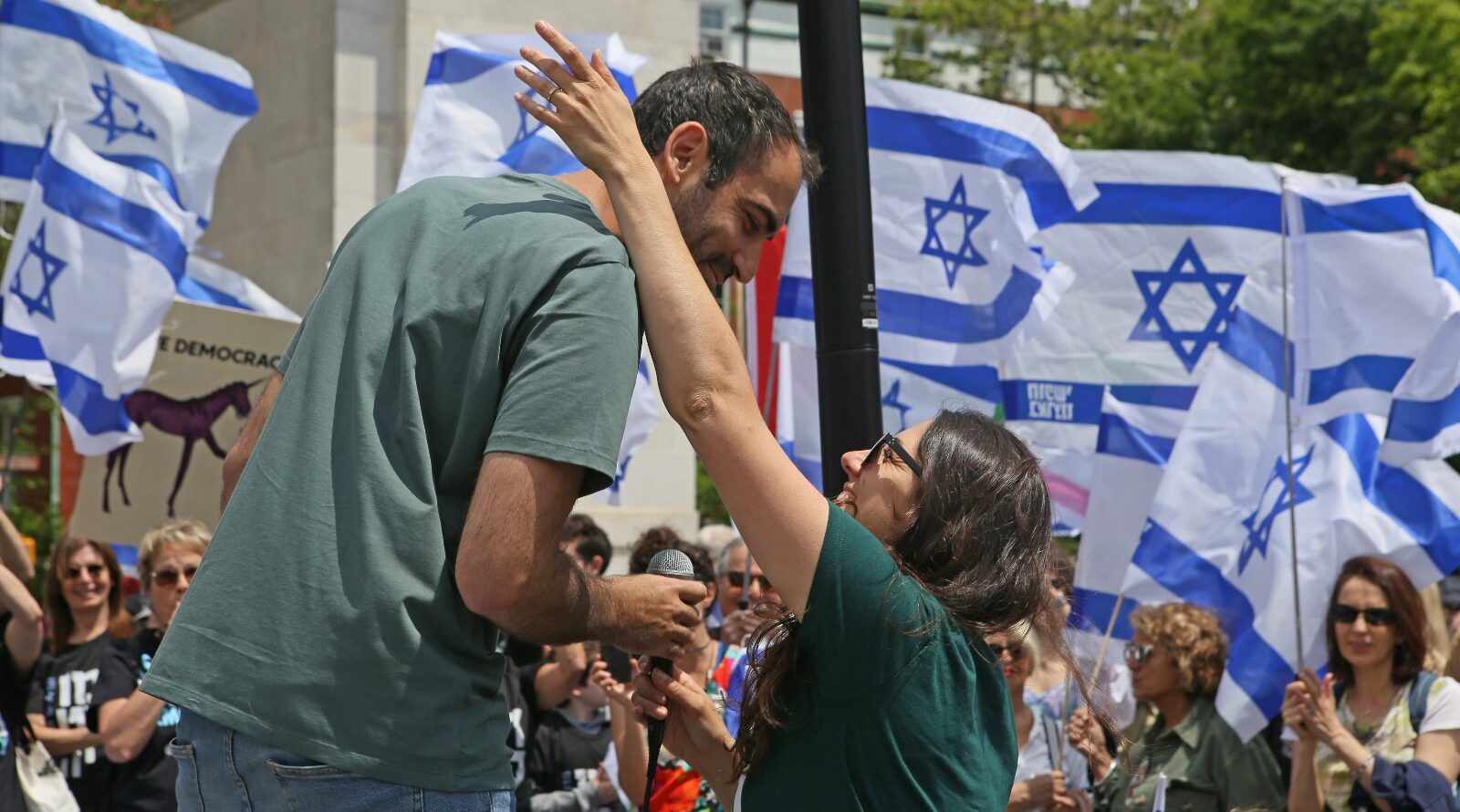
Omer Granot-Lubaton, left, and Shany Lubaton-Granot, right. (Courtesy)
(New York Jewish Week) — When Shany Granot-Lubaton saw the picture of her mother at a protest in Tel Aviv, she began to cry — and knew she needed to do something.
Shany and her husband, Omer Lubaton-Granot, had arrived in New York City four months earlier, in the fall of 2022, so he could study at Columbia’s School of International and Public Affairs.
They had come with their 1-year-old son, Michael, their dog — a Malinois named Golda, for the late Israeli leader Golda Meir — and high hopes for a “break from Israeli politics,” Omer said during a recent interview at a Morningside Heights restaurant. Back home, both had worked for lawmakers from the Labor Party.
“We just thought that we will get to have some time of our own and for our family,” Shany said. “And I was planning to have another child in this time, and it will all be very peaceful.”
Then Prime Minister Benjamin Netanyahu returned to power and set out to overhaul the Israeli judicial system — sparking an unprecedented protest movement. One day, Shany received a photo of her mother, then 75 years old, standing with the family in the pouring rain at a Tel Aviv rally.
“The moment kind of broke me,” Shany said. “I burst into tears and I thought, ‘What am I doing here? I want to go home, I want to fight for my home.’”
This week, Shany and Omer are moving back. But their two years in New York have been anything but a break. Instead, they have become the leaders of a protest movement in the city that first took aim at the judicial overhaul and then — after Oct. 7 — quickly pivoted to advocating for the Israeli hostages held by Hamas in Gaza.
They’ve met with the head of the United Nations, orchestrated duffel bags’ worth of emergency donations to Israeli troops, been quoted across U.S. media and led large demonstrations up and down the city. (Shany was named this year to the New York Jewish Week’s “36 to Watch,” recognizing accomplished New York Jews.) Their fellow activists say that movement, in turn, has started a deeper trend — a new sense of unity between Israeli expats and American Jews.
“She has really revolutionized the Israelis in America, specifically New York, in political activism,” Gili Getz, a progressive Israeli activist in New York, said of Shany. “She really managed to create a new scene, a new culture of activism that did not exist before on this scale.”
The couple shares that feeling. “We feel so privileged and honored to be part of this community,” Shany said. Omer added, “We understood if you have a really strong community, especially in New York and it’s the Jewish community and you keep them together, you can really make a difference.”
The couple has completed a learning curve since they organized their first anti-judicial overhaul protest in January 2023 in solidarity with rallies in Israel. At the time, they had only a few friends in the city and were still settling in.
On the advice of Israelis who had organized protests in New York in 2011, they chose Washington Square Park for the location, and Shany joined Israeli WhatsApp and Facebook groups in the city to advertise the event. Israelis in New York and American Jews tend to move in separate spheres, and traditional American Jewish gathering places, she said, were not yet on her radar.
“WhatsApp groups are like the Israeli synagogues,” she said. “This is where we meet.”
They ordered a megaphone and 20 Israeli flags on Amazon for $200, linked up with two other Israeli activists, and wrote slogans like “Save our country” on eight blank pieces of cardboard. Their son, who had just learned to walk, held a tiny protest sign. Shany and Omer had helped organize political events in the past, but had never taken center stage, and didn’t know how to use a megaphone.
They expected around 30 people to come. One hundred showed up.
They passed around notepads for people to share their contact information, and began building a movement. A friend, a pilot for El Al, brought suitcases of Israeli flags and protest T-shirts to a New York hotel.
They soon realized that being in New York City held a power of its own. Protest events expanded to include a march across the Brooklyn Bridge held in tandem with a protest march to Jerusalem, and a rally outside the Israeli consulate when the consul general, Asaf Zamir, quit in protest of the government. Other rallies targeted American supporters of the judicial legislation such as the right-wing think tank the Kohelet Forum; for that one, Shany did not yet know how to obtain a police permit.
“I was like, ‘Just don’t get arrested. I have a busy day,’” Omer said.
The Israeli protesters increasingly linked up with American Jews. The Washington Square Park rallies, held under the banner of the Israeli expat anti-Netanyahu movement UnXeptable, moved from Saturdays to Sundays to better accommodate local observant Jews, who started showing up due to their shared frustration with Israel’s government. Some local rabbis came to deliver speeches at the events.
There was still a gulf between the Israeli expats and the New York Jews. The Israeli protesters are largely secular, while much of the American Jewish community generally organizes around synagogues. Over time, the liberal Israelis came to view some American rabbis as allies — which marked a shift from their secular Israeli community, which often sees religious authorities as adversaries.
“For Israelis, the default is, the people with the kippahs are not on our side. We don’t have that in Israel,” Omer said, but after time, “Israelis began to see so many colors on the wide spectrum of Judaism, that Judaism can be democratic and liberal and Zionist.”
And for American Jews who may feel uneasy about publicly denouncing Israel, the fact that the protests were led by Israelis “gave them legitimacy to say, ‘We are pro-Israel,’” while protesting the Israeli government, Omer said.
A key moment of unity between Israelis and American Jews came during a protest outside the Israeli consulate in July 2023 on Tisha B’Av, a fast day that marks the destruction of the holy Temples in Jerusalem and other tragedies, and that fell shortly after the Israeli government passed a key portion of its judicial overhaul. The event combined a religious service with political protest.
“It was the first time we did a very Jewish thing,” Shany said. But the Israelis and their American allies were still divided.
On the left side of the sidewalk, the American Jews gathered, bearing a Torah and wearing kippahs. On the right was the Israeli crowd. Shany addressed the Israelis in Hebrew, calling for patience during the religious service, and addressed the Americans in English. The event symbolized the complicated but productive relationship between the two groups, she said.
“I was so narrow-minded when I came here considering Jewishness, considering how to protest,” Shany said. “I think the biggest thing I got from here is this very important lesson in humility. It’s a huge lesson for me because I’ve learned so much from people who are different than me.”
The protest movement gained more attention in September 2023, when Netanyahu and members of his coalition visited New York for the United Nations General Assembly. Thousands of Israel supporters gathered outside the United Nations and in Times Square for rallies against the Israeli government, many waving Israeli flags. Protesters also declared a game of “hide and seek” targeting the visiting Israeli ministers. When a group member spotted one of the lawmakers in public, they shared the location on WhatsApp groups that linked thousands of activists, and nearby sympathizers headed to the scene to harangue the politicians.
Oct. 7 came two weeks later. Upon hearing news of Hamas’ attack, Shany and Omer set up an online platform with help from friends in Israel, using the network they had built up through the protests, to donate equipment to Israeli soldiers. Protest leaders in Israel took the same approach in the weeks after Oct. 7, pivoting from protesting the government to providing social services and advocating for the hostages’ release. The couple later received photos of bulletproof vests they had sent with pock marks in them, a sign that the effort had likely saved lives.
For Omer, as for many Israelis, Oct. 7 constituted a personal loss. Four of his relatives were taken captive in Gaza, and another two had been killed. Shany, who until then had been the face of the protest movement, handed the reins to her husband.
“I said, ‘I can’t be the front of this because I was rallying against Netanyahu two weeks ago,’” Shany said.
Some of the anti-government protest equipment was directly repurposed to support the hostages and the war effort. At an Oct. 10 rally, Shany handed out Israeli flags from the protests bearing the slogan “Free in our land,” a line from the Israeli national anthem adopted by the protest movement. The same week, a projector that had been used to broadcast an anti-Netanyahu message onto U.N. headquarters weeks earlier projected images of Israeli hostages onto the same building. The slogan for the protest movement, “Saving Israeli democracy,” was changed to “Saving Israel.”
They connected with the families of American hostages and worked to build out a broader coalition with the American Jewish community, alongside New York Jewish groups, bringing in organizations from across the American Jewish political spectrum, from the conservative Zionist Organization of America — which supported the judicial overhaul — to the progressive J Street.
They held events outside the United Nations and across the city, and staged weekly rallies outside the private home of U.N. Secretary-General Antonio Guterres. Over time, Guterres and the protesters developed a cordial relationship, with Guterres at one point taking Shany’s megaphone to speak in support of the hostages.
As the months went on, the couple sought to keep New York’s hostage advocacy movement staunchly apolitical, in contrast to Israel, where some of the movement for the hostages’ release has turned against Netanyahu, who protesters say is not doing enough to secure their freedom.
Noam Gilboord, the chief community relations officer at the Jewish Community Relations Council of New York, said he started working with Shany and Omer during 2023’s Celebrate Israel parade. The relationship grew as he and the couple collaborated on hostage events.
“I wish it didn’t take Oct. 7 and the hostage crisis to really solidify this type of relationship,” Gilboord said. “I think what this conflict has shown is that the Israeli expat community in New York has a place within the broader Jewish community.”
The Israeli protest movement in New York has lost some of its cohesion in recent months as some activists push for a more political stance, while others seek to focus on the hostages and stay out of politics. Meanwhile, the judicial overhaul — the main motivator for the movement — has receded.
Shany and Omer have handed the leadership of the hostages forum to other Israeli activists who have been involved in the work, and said they will continue to support both that effort and the protest movement in New York from abroad.
“Both the pro-democracy Israeli movement continues and the Bring Them Home headquarters are continuing here,” Shany said. “Everyone will continue to push forward.”
But Getz said the protest movement may lose steam if the couple’s departure creates a leadership vacuum and removes an essential skill set.
“When Shany leaves, there’s nobody that talented that can negotiate both cultures, negotiate the Israeliness and the American Jewishness,” he said. “I’m concerned that I don’t see anything replacing her and Omer, but maybe there will be.”
Their transition to Israel will be a boon to the Israeli left as it seeks to rebuild after years of decline, he added. “The knowledge she’s bringing to Israel about American Jewish political dynamics will serve Israelis really well,” Getz said.
The couple will settle in Tivon, a small town in the north. Omer will go back to his work in political consulting, and Shany will head Shelanu, a liberal, political nonprofit aligned with the protest movement.
In that role, she hopes to continue to build out the ties between American Jews and liberal Israelis by opening a new section of Shelanu dedicated to fostering those connections.
“There’s a bridge that was built and I think the fight against the judicial overhaul was the first step. We managed to put our feet in the door and open this way to change ideas and work together and learn about each other,” Shany said. “Then the fight for the hostages now is really making this whole new space of Israelis and American Jews working together for a common cause.”
